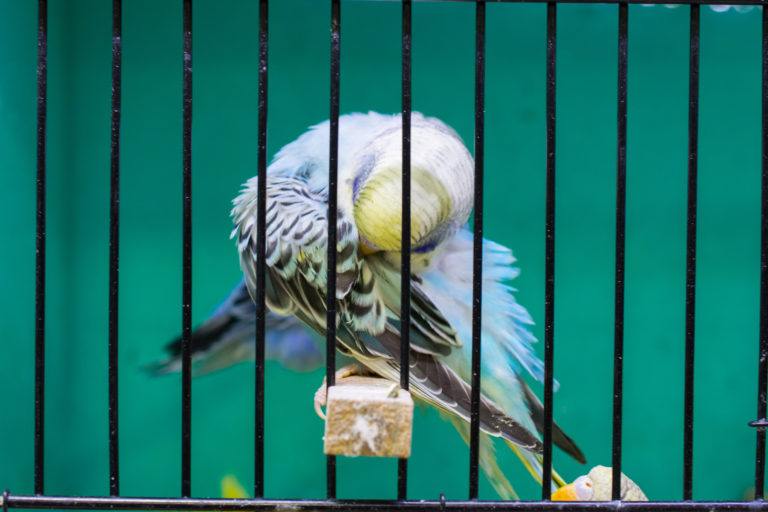
Quick Tips
Birds may be beautiful, but they are also spectacularly messy. Between scattered seed hulls, molted feathers, and waste buildup, an unclean bird cage can quickly turn from a cozy home into a health hazard. If you’re dealing with pet-related messes, you might also want to check out our guide on How to Clean Cat Urine for tips on tackling strong odors. Regular cleaning not only keeps your feathered friend happy but also prevents bacteria and mold from setting up shop. Follow these seven steps to ensure your bird’s cage stays fresh, safe, and free of questionable odors.
Essential Supplies You’ll Need
- White Vinegar or Bird-Safe Disinfectant – To clean without harming your bird.
- Warm Water and Mild Dish Soap – For a gentle but effective scrub.
- Scrub Brush or Sponge – To tackle perches and stubborn stains.
- Paper Towels or Microfiber Cloths – For drying and quick cleanups.
- Gloves – To protect your hands from bacteria and waste.
- Replacement Bedding or Liner – Because a clean cage starts with a fresh base.
- Spray Bottle – To apply cleaning solutions evenly.
Step-by-Step: How to Clean a Bird Cage
1. Remove Your Bird and Accessories
Before cleaning, place your bird in a safe, temporary enclosure, like a travel cage or another secure area. Remove all accessories, including food and water dishes, perches, toys, and liners. Cleaning the cage without obstruction makes the process far more effective and prevents accidental exposure to cleaning agents.
2. Dispose of Waste and Liner
Take out the cage liner or bedding and dispose of it immediately. If you’re using newspaper, paper towels, or cage liners, replace them with fresh material. If you use wood shavings or other loose bedding, empty and rinse the bottom tray before refilling it.
3. Scrub Perches and Toys
Birds love to perch and chew on everything in their space, which means their accessories get grimy fast. Scrub perches, toys, and food bowls with warm, soapy water and rinse thoroughly. Avoid using harsh chemicals or scented cleaners—birds are highly sensitive to fumes and residues. If you’re dealing with stubborn grime, a vinegar and water solution (50/50 mix) can help break it down safely.
4. Wash the Cage Itself
Using a bird-safe disinfectant or a mixture of vinegar and water, thoroughly wipe down the bars, walls, and bottom tray of the cage. Pay extra attention to corners and crevices where debris can accumulate. A scrub brush can help with any particularly grimy areas. If possible, take the cage outside and hose it down for a deep clean. For more on maintaining pet spaces, our guide on How to Clean a Fish Tank offers additional strategies to keep animal habitats fresh.
5. Rinse and Dry Everything Completely
Once all parts of the cage and accessories are clean, rinse them with warm water to remove any residue. Dry thoroughly with a clean towel or let them air dry before putting them back together. Birds are highly sensitive to moisture buildup, which can encourage mold and bacteria.
6. Replace Liners and Reassemble
With everything clean and dry, replace the cage liner or bedding, return perches and toys to their proper places, and refill food and water dishes. Take this opportunity to rotate or swap out toys to keep your bird mentally stimulated.
7. Return Your Bird to Its Fresh Home
Finally, place your bird back in its newly cleaned cage. They may be a little wary at first, but once they realize their space is fresh and comfortable, they’ll appreciate the effort (or at least, they won’t complain as much).
How Professionals Clean Bird Cages
Professional avian caretakers follow strict protocols to keep bird cages as clean and hygienic as possible. According to experts like The Spruce Pets, professionals use the following techniques:
- Daily spot cleaning. Waste and food debris are removed every single day to prevent bacteria buildup.
- Weekly deep cleaning. The entire cage, including perches, bars, and trays, is scrubbed down at least once a week.
- Non-toxic disinfectants. Professionals avoid bleach and harsh chemicals, opting instead for bird-safe disinfectants or vinegar-based solutions.
- UV sanitation for extra protection. Some aviaries use UV light sanitization to kill bacteria and airborne pathogens without exposing birds to chemicals.
- Proper drying techniques. Keeping cages dry is essential to prevent mold, mildew, and respiratory problems in birds.
If you want to maintain a pro-level clean, incorporating these habits into your routine will ensure a safe, hygienic home for your bird.
Pro Tips for Keeping Your Bird’s Cage Cleaner, Longer
- Change the liner daily. A fresh liner means less odor and an easier cleanup.
- Use a seed guard. This can help catch flying food debris before it reaches the floor.
- Keep food and water dishes elevated. This minimizes contamination from droppings.
- Wipe down high-traffic areas daily. Birds perch and nibble in the same spots—keeping these areas clean reduces bacteria growth.
- Invest in a handheld vacuum. A small vacuum can quickly pick up fallen feathers and seed hulls without disturbing your bird.
Final Thoughts
A clean bird cage isn’t just about aesthetics—it’s essential for your bird’s health and happiness. If you’re in full cleaning mode, don’t forget to read our article on How to Clean a Carpet Stain to handle any messes that may have landed outside the cage. By following these seven steps (and adopting a few pro tricks), you’ll create a fresh, safe, and comfortable space for your feathered companion. So grab your gloves, mix up some vinegar solution, and reclaim your bird’s home from the grime!